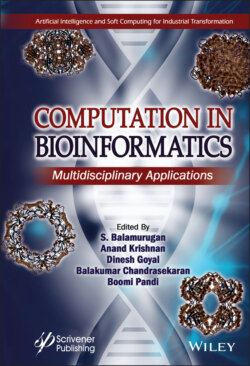Читать книгу Computation in BioInformatics - Группа авторов - Страница 23
1.2.9 Molecular Dynamic Simulation
ОглавлениеIt is a computational method which involves the solution of Newton’s equation for motion to examine the dynamicity of the biological macromolecules. It provides comprehensive information on the fluctuations and conformational changes of proteins and nucleic acids. It helps in understanding the constancy of complexes of protein-ligand or of individual protein. Docking of protein-ligand complex with the ideal binding affinity is usually subjected to MD simulation. The protein topology is initially obtained by standard parameters using GROMACS or LEAP program. Online server PRODRG program is used for generating ligand topology [42]. It allows the study of interactions which occurs between different macromolecules during various cellular life processes and also analyzing of biological processes occurring in a living system. GROMACS is one of the most commonly used MD simulation softwares [43]. It produces trajectory files which carries the information of every conformational change that would have occurred on each atom during simulation. It provides a platform for the researchers to study the stability and minimization of energy of proteins as well as protein bound complexes. Some of software packages like NAMD, GROMACS, CHARMM, and AMBER are used for molecular dynamic simulation [44].
GROMACS: It is one of the most commonly used molecular dynamic simulation softwares. Input files are taken in PDB format which then produces trajectory files that carry the information of each and every conformational changes taking place that would have occurred on each atom during simulation. It requires several commands to process this software. Using this software, researchers are able to study the stability and minimization of energy of proteins as well as protein bound complexes. It can be downloaded from http://www.gromacs.org.
